5. The Social Network (2010)
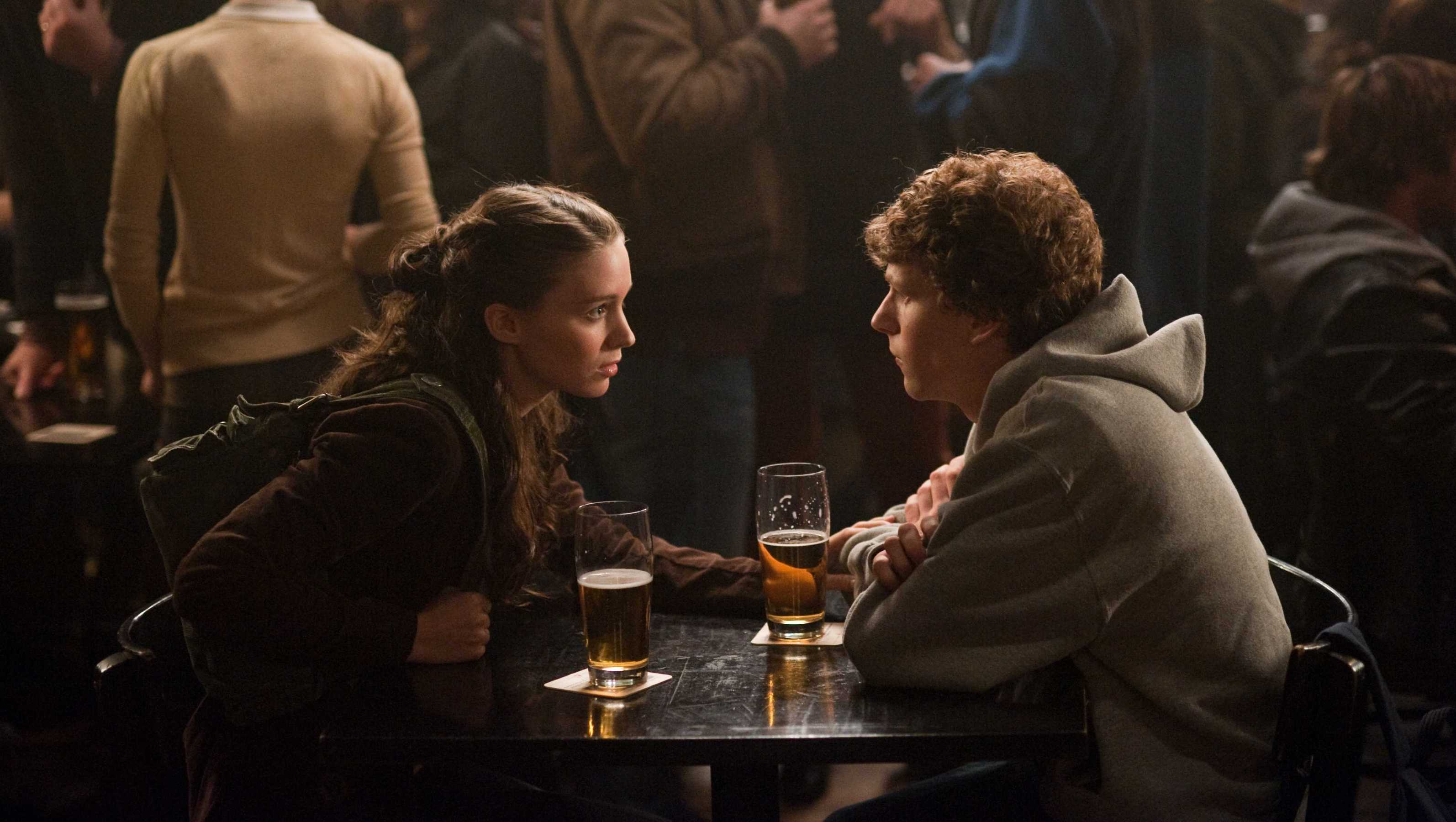
At first sight, his movie about Mark Zuckerberg and the invention and initial rise of Facebook stands out of Fincher’s mostly thriller-dominated achievements. But regarding the presence of intrigues and the protagonist’cs nearly dysfunctional will of appreciation, the movie reveals some Fincher-generic features with its psychological aspects.
As mentioned, the movie tells the story of how Zuckerberg invented Facebook at Harvard University, and the following lawsuits from three of his fellow students.
Thematizing values like friendship and ambition, Aaron Sorkin’s screenplay is one of the best of the 21st century (even with the substance being disputable with regards to historical correctness) with his crossfire-like dialogue. Blessed with this excellent basis, the movie is a fine statement on the effect of greed interfering with friendship, and the way things work out if the craving for success is bigger than the bond between friends.
The movies primary ambition isn’t the historical representation of the company’s development, but the dramatic portrayal of a standout person being deeply injured and willed to compensate his pain with acceptance and credit in history. That might be the reason why so many people like the movie – the protagonist’s want. He searches for recognition – a feeling everybody understands.
Even if the mention might be redundant to a Fincher movie, the film offers first-class editing (among other aspects due to the invisible split-screen technique perfectly fitting to Sorkin’s razor-sharp conversations) and a distinct look excellently suiting the director’s cinematic world.
At times the movie’s look sprays a technological vibe, and the superb soundtrack from Trent Reznor and Atticus Ross works as the perfect musical metaphor for the narrative with its mostly synthesizer-based compositions as perfect symbioses between humans and machines (like Facebook pretends to be).
In the broadest sense, “The Social Network” is a college movie denying every cliche imaginable. Fincher’s movie contains parties, sex, drugs and love. But the director weaves all these ingredients into a thrilling business context and a personal layer full of psychological senses, resulting in a prime example of modern, genre-spanning cinema, and one of the director’s best works to date.
4. The Girl with the Dragon Tattoo (2011)
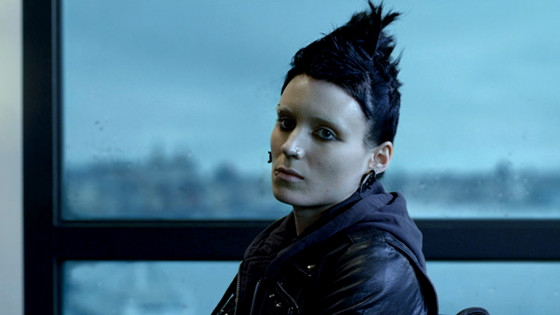
After the massive success of the Swedish book’s adaptations of Stieg Larssons “Millennium” trilogy, it was just a matter of time before Hollywood put out feelers for an American remake. But instead of going down the uninspired road of nearly every big-budget Hollywood remake (of course there are some well-produced exceptions), Fincher’s version of “The Girl with the Dragon Tattoo“ might be at least as good as the original.
Plagued by a libel suit following his investigations against a criminal entrepreneur, the journalist Mikael Blomkvist needs some distance in his work-related life. He accepts the order to resolve the mysterious disappearance of the daughter of an elderly businessman that happened decades ago.
While researching, Blomkvist is confronted with refusal and suspicion by the businessman’s clan, and the help of the mentally injured and unpredictable hacker Lisbeth Salander (brilliantly performed by Rooney Mara).
There’s a reason why Sweden is a first class exporter of bloody and terrifying thrillers (both in literature and cinema), as the dark surroundings of Scandinavia seem to be the perfect hotbed for stories revealing dark human abysses and horrifying crimes. Regarding that, it surprises that this film is the first cinematic adaption of a Scandinavian novel by the often literature-inclined director.
Fincher’s directing, his style of cinematography, and use of light perfectly fit these morbid and sinister landscapes with their long nights and cold winters. Following that, the movie works as a frightening journey into the vicious chasms of the bourgeoisie, and a very revealing approach on thrillers referring to sexual and violent aspects within Hollywood conditions.
3. Zodiac (2007)
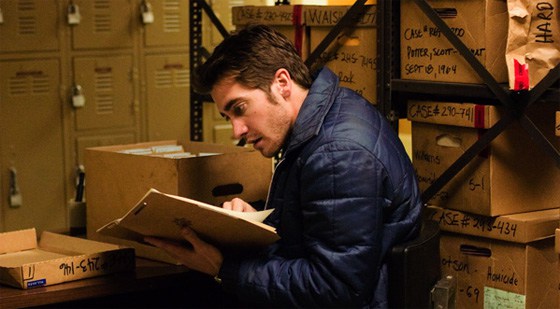
How could a movie about a real serial killer whose identity has never been revealed be an overall captivating and critically acclaimed thriller, with the audience being bound to the narrative for more than two and a half hours while already knowing the story’s end? Fincher managed this balancing act with brilliance and offered the world his fascinating investigation movie starring a superb actor ensemble including Jake Gyllenhaal, Robert Downey Jr. and Mark Ruffalo.
The film is an interesting character sketch of the protagonists and their different ways of dealing with the exhausting and unsuccessful haunt for the Zodiac Killer.
In particular, Gyllenhaal delivers a premium performance as an increasingly obsessed cartoonist who starts his investigations after receiving publicity-orientated letters with inscrutable enigmas from the Zodiac himself at the editorial office of a national newspaper. While his desire for dead certainty is indestructible, the characters of Downey Jr. and Ruffalo are less persistent and try to move on after years of unavailing tracing.
The excellent narrative is mixed with Fincher’s precise directing style and some fine examples of using light and shadow in order to enhance the suspense. Despite that, the film offers a first-class production design full of rich details, kidnapping the audience into late 1960’s America and the following decades. Regarding the extended interval of the movie’s narrative, the visual layer presents some very inventive ways of showing these time leaps on screen.
Well-made movies about serial killers always feel sinister and gloomy caused by the bloody crimes shown on screen. But “Zodiac” spares the showing of these actions with a few exceptions, as compared to his other serial killer film “Se7en” (in fact, his 1995 movie didn’t show the murders, but rather the blood-drenched crime scenes).
But what gives the audiences heavy chills, even after leaving the cinema, is the interesting scenario regarding Fincher satisfying the killer’s mentally defective will of publicity for his life-eliminating actions after more than four decades.
2. Fight Club (1999)
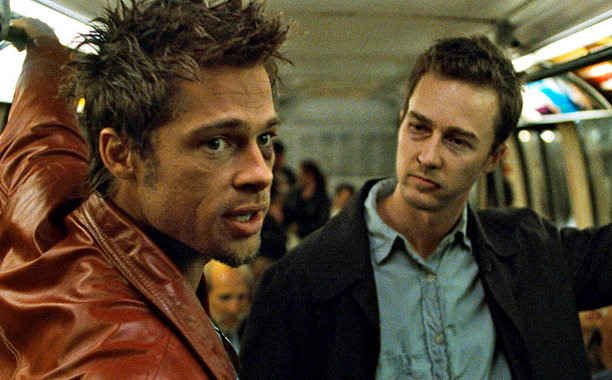
Often regarded as a men’s-only movie and criticized for its clear presentation of violence and its pure nihilistic worldview, “Fight Club” is a masterpiece of psychological cinema armed with deep meaning and metaphorical features, and an excellent example for an interesting character and his arc.
The narrative’s unnamed protagonist has to face long-lasting insomnia. While attending support groups at least gives him some calm, the disturbing appearance of an inscrutable woman disrupts his cure time. In order to avoid each other, they cut a deal. In the meantime, the narrator makes the acquaintance of the even more ominous Tyler Durden.
After a spontaneous fistfight, they both establish a men’s-only club for the members to experience a brutal catharsis. Through the movie’s progress, the institution gains a terrifying life of its own with Durden acting as the self-proclaimed leader of a anarchy-preaching organization.
Despite its mesmerizing story and one of the greatest and most mind-blowing plot twists in cinema history, the movie has some fine visual merits to offer. From the stunning opening sequence to the occasionally inserted one-frames of Durden or the desaturated color palette, every element of the audiovisual layer works as a well-thought metaphor for the movie’s narrative. The analysis of these symbolics could fill libraries; that’s the reason why even after watching the movie once, it could be watched over and over again without losing its fascination.
Regarding the whole oeuvre of David Fincher, “Fight Club” crows over the majority of his movies in view of creativity while providing a totally distinct aesthetic. His directing style goes far beyond the aim of entertainment, but works as an subconscious-influencing illustration of anarchy and mental illness in a pessimistic world.
1. Se7en (1995)
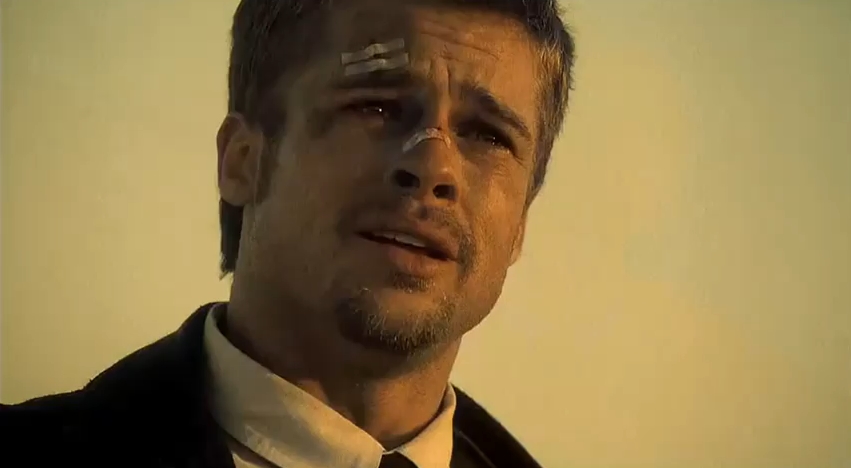
As mentioned, one of Fincher’s greatest skills is his ability for creating a distinct cinematic aesthetic, relentlessly roping the audience into the movie’s world. In nearly every one of his films, Fincher did this with inimitable mastery, but none of his films succeeded in this manner like his haunting thriller masterpiece “Se7en”.
Spanning over the course of one week, the movie tells the story of a nearly-retired detective and his young and ambitious replacement. Together they have to face personal differences, and first of all the blood-drenched murders of a ruthless and psychopathic killer who’s obsessed with the seven deadly sins.
Taking place in a dystopian metropolis, the movie’s world is dominated by permanent rain and cloudy darkness, where unimaginable crimes uncloak the deepest of human abysses and sinister desires. But among this impervious darkness, small shimmers of light work like the remembrance of human values and love in a society passed to immorality.
Closing with this quote from Ernest Hemingway – “The world is a fine place and worth fighting for. I agree with the second part” – followed by the protagonists opinion, the end perfectly sums up the film’s entire purpose and aesthetic.
One of the main reasons why “Se7en” ranks number one on this list is its ending. It offers a lot of great scenes, from the chase of the unknown killer in a diffuse apartment building, or the killer’s apparent capitulation in the police headquarters. But the ending is one of the most haunting and masterly composed climaxes in movie history, and definitely outshines every other sequence in the film.
Seeing it for the first time is as mind-blowing as a movie ending could get, and it remains with the viewer for a long time after the screen changes to black. Despite the nail-biting tension and the first-class acting of all participants, the climax is peppered with a load of clever symbolics and beautiful cinematography (just think about the steel-constructed electrical towers containing of thousands of sevens, or the exact seven shots Mills finally fires on Doe).
As the result of all the cinematic layers working perfectly together, even two decades after its release, “Se7en” is one of the most tension-loaded and distinct thrillers of all time, and showed the world the director’s genius with only two movies in his oeuvre to that date.
Author Bio: Berlin-based Luc Hinrichsen has a bachelor’s degree in audio engineering and plenty of experience in scoring movies on his own. Beside that, he is an aspiring screenwriter and director always curious about enlarging his knowledge about film and its history.